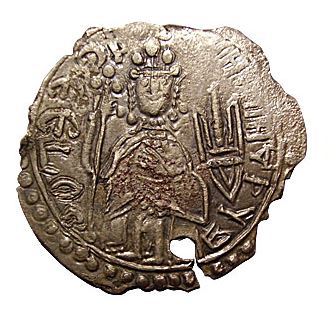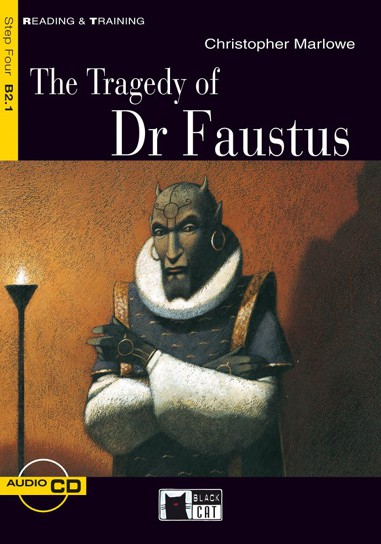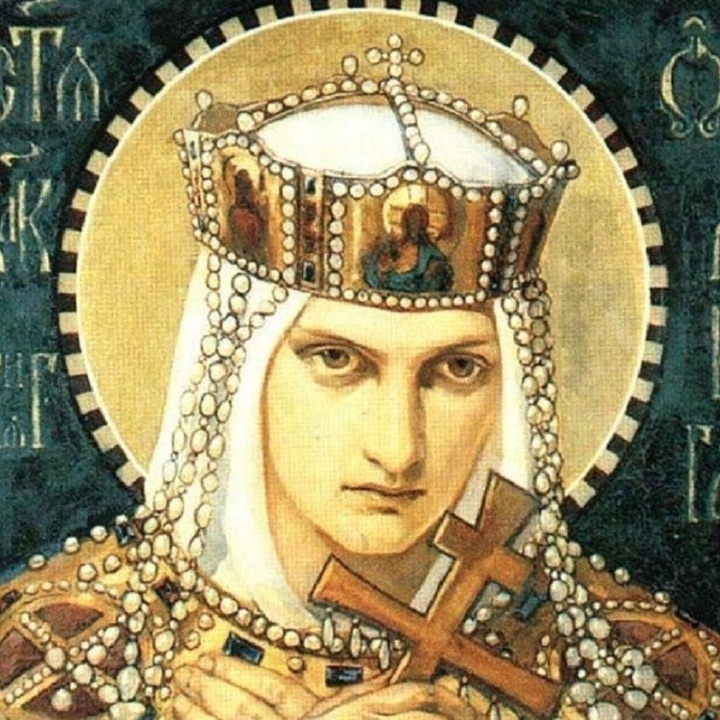There’s no-one more pious and nice to be around than a saint, right? These guys (although they aren’t always guys) are great people, paragons of virtue who lived selfless lives in the service of their God. Well, except for the ones that didn’t, of course. Let’s take a look at five of those who broke the mould and then went the extra mile by breaking a few more moulds as well.
And by moulds, we usually mean people. We’ll start off lightly with…
5. Blessed Bartolo Longo
Let’s start things off with a modern one. Back in the 1860s, Italy was going through a rather turbulent time, what with the whole “let’s unite Italy again” thing. It had been quite a while since the whole of Italy was one country and most people had forgotten how to do it, what with them not being Ancient Romans, so the whole place was in a bit of an uproar. During this time, the Catholic Church was feuding with the new Italian Nationalist movement, because the Nationalists wanted to get rid of the Pope and the Pope… didn’t.
In the midst of all this, a young law student called Bartolo Longo entered the scene. He was studying law at the University of Naples (a rather prestigious university, what with being very, very old and all). The University of Naples was a hub of nationalist, anti-Papal sentiment; and also witchcraft. No, I don’t know how those two got mixed up together either, just go with it.
Anyway, Bartolo seemed to really get into the whole witchcraft thing and then he moved on from there into Satanism, becoming a Satanic Priest. Look, everyone does some wacky stuff when they’re a student, okay? Most of us get really drunk and accidentally join a political party, or maybe the local LARP group, but clearly old Bartolo here was an overachiever.
But hey, if a satanist who was into nationalism and the occult isn’t scary enough for you (and sure, he did eventually recant and turn to Catholicism, you’ve got us there), you could always try…
4. St. Vladimir
Vladimir, a Prince in Kievan Rus (now mostly part of Ukraine but also a bit of Russia) decided to start his political career by killing his older brother. Top guy, this one. Truly a role model for us all. The thing is, that was just the start of his adventures in epic bastardry because once he’d finished killing his brother he later went on to rape his sister-in-law. He didn’t stop there, either; he added her to his harem of “several hundred women”, because apparently this guy can’t stick to sexually assaulting just one woman. What a charmer.
So anyway, old Vlad here decided he needed a new temple to all the gods and the only way to kick this thing off in style would be to murder a guy and his son. So that’s lovely. I don’t know who would have enjoyed human sacrifice more: the pagan gods he was dedicating the temple to, or Vladdy Boy here, who was clearly a prick of epic proportions.

But this wasn’t the end of Vladimir’s descent into being an utter shit because he came onto the radar of the Emperor over in Constantinople. Byzantine Emperor Basil II (“this time it’s personal”) needed some help dealing with a rebellion and he thought a psycho like Vlad would be the man for the job. Vlad thought so too but he wanted something in return: the Emperor’s sister. He wanted to marry her because his existing seven wives (and his massive harem) apparently weren’t enough for him. Nobody here at All Over the House can work out what Vladimir’s problem was but we have an inkling that a lot of his antics could have been stopped with a few bromide tablets, if you catch our drift.
Weirdly enough, Emperor Basil II agreed as long as Vlad converted to Christianity – and Vladimir did. He went to Constantinople to deal with the rebellion, married the Emperor’s sister and went home… where he immediately started demolishing pagan temples and converting his people to Christianity. For this, he was made a Saint; because apparently you can forgive rape and human sacrifice if you sign up enough people to a new religion. Who knew?
3. Saint Cyprian
Cyprian was a 3rd century sorcerer, born (or possibly made up out of whole cloth because nobody is actually sure he existed) some time in the 200s AD. He hung around Antioch, performing acts of sorcery, which included using magic to sexually assault some people. He’s a top notch guy and absolutely destined for sainthood, is what we’re saying.
At some point in his life, he encountered a lady called Justinia, whom he fell head over heels for. Being a stand-up dude who was respectable in all his deeds, he decided the best way to win over the lady he had just met was to concoct a love spell, because just talking to the woman and showing her he was a decent guy never seems to come into the equation. The love spell didn’t work, so he decided to do the next best thing: fall into a deep despair and repent, converting to Christianity and winning Justinia over that way.

Following his conversion, Cyprian quickly rose through the ranks of the Christian Church and, in the process, came to the attention of an even bigger bastard than himself: Emperor Diocletian. You may not have heard of Diocletian but you’ll have heard of his inventions: the divine right to rule, and feudalism. That’s a guy who knows how to get what he wants!
Anyway, Diocletian was in the middle of one of his angry phases and he was busy persecuting Christians. Cyprian and his beloved, Justinia, were both martyred during the same purge, around 304 AD, becoming saints thereafter.
Whether Cyprian existed or not has been the subject of much debate, especially since his life story sounds an awful lot like the story of Faust. We’ll let you decide whether he’s real or not.
2. Saint Olga
When it comes to listing all the female saints, a lot of the early ones have a similar biography: they were widely known for having sex with anyone who wanted it, then they converted to Christianity and lived selfless lives in the service of the Church. Saint Olga does not fit this mould. Saint Olga blazed her own trail – and by “blazed”, I mean she burned a lot of people alive.
Olga was a Viking who lived in what is now mostly Ukraine, although some of her territory is also in modern Russia. She was the wife of a local ruler who was murdered by a neighbouring tribe. Representatives from those neighbours then turned up at her court and told Olga that they had killed her husband, so she should marry one of their Princes if she wanted to keep being in charge. Olga had them burned alive in a pit; and to be fair that might be a bit extreme but we kind of see where she was coming from on that one.
That wasn’t the end of things for Olga, however. Still angry at this neighbouring tribe, she sent a message to their leaders that they should send “their distinguished men to her in Kiev, so that she might go to their Prince with due honour” (her words). What she actually planned however was to murder everyone that was sent over – and she did. This time she decided all the men had travelled a very long way, so they were probably all sweaty and needed to bathe before she would meet them. The men, not knowing what had happened to the messengers that had been sent over before, went to the bath house to bathe. Olga had the building sealed up, and then set fire to it.

Olga still wasn’t satisfied, however; and by this point we are starting to think her neighbours were a bit thick because she sent word that she was coming over and they let her. She told them to prepare a vast amount of mead, so she could hold a funeral feast for her dead husband, which she did in fact do. The local tribesmen joined her in this feast, and proceeded to get utterly wasted on the mead she had ordered them to assemble. Then she had her men kill all the enemy tribe. All 5,000 of them.
Then she went home and assembled an army, to wipe out what remained of the tribe. At this point, the enemy tribe had finally worked out what was going on, so they holed up in a city and Olga had to lay siege to it. Sieges are costly and time-consuming things, so Olga decided to speed everything up. She told the Drevlians, the enemy tribe, that she had already satisfied her thirst for vengeance over the death of her husband and now all she wanted from them was a small token of tribute: three pigeons and three sparrows from each house in the town. How could the Drevlians refuse such a small token in exchange for peace?
They sent the birds and hoped the campaign of terror was over. It wasn’t. Olga had sulphur and rags tied to every one of the birds, set fire to the rags, then released the flaming birds back into the city. The entire place burned down and the survivors desperately tried to escape the flames. Olga had her soldiers massacre many of them, capture some as slaves and then leave the remainder to rebuild the city.
What we can take from this is that you really don’t want to anger this woman, because she will absolutely get you for it. Anyway, she later converted to Christianity and tried to convert all of her kingdom too. As it turned out, murdering immense amounts of people was what she was really good at, not missionary work. She died thinking she was a failure, but the Church venerated her anyway.
1. Saint Constantine (the Great)
If there’s anyone scary enough to top this list, it has to be Emperor Constantine the Great; who is venerated in the Eastern Catholic and Eastern Orthodox Churches. The guy who essentially codified the Bible as we know it was a devout Christian (after his conversion from Roman paganism, where he had regularly employed soothsayers that conducted animal sacrifices) but that didn’t stop him from waging several bloody wars during his rise to power. He entered the War of the Tetrarchy, a period of Roman civil war, as one of the minor players in the battle; but ended the conflict as supreme ruler of the Roman Empire.
Constantine started his career as a Roman ruler by killing lots of people in Britain, as part of the regular Roman occupation (in both senses of the word) involving massacring Picts to maintain control of the province. He was proclaimed Emperor while in Britain later moved on to Gaul, then Italy; where he burned down the gates of the first city he encountered and took the town quickly. To show how nice a guy he was, he ordered his men not to loot the town. No doubt the townspeople were really happy about this, once they’d put the fires out.
He then proceeded toward Rome, to face the other Emperor, Maxentius. This encounter ended badly for Maxentius, who drowned in the river and was trampled by his own soldiers as they fled upon defeat of his armies. Constantine had his rival’s body dredged from the river and decapitated, with the head paraded through the streets of Rome. Nice guy!
After this, he converted to Christianity and decided it was time to sort out all the arguing between the various sects once and for all (because apparently when you’re Emperor you think you can just make things be true because you say so?). He convened the First Council of Nicea, where everyone decided Jesus was definitely the Son of God, and the two representatives who disagreed were banished. Again, apparently you can just decree this stuff if you’re Emperor and everyone has to go along with it.
For all of his killing, war-waging and redefining of Christianity, he has become a Saint in the eyes of the Eastern Churches. For our part, we aren’t going to disagree with him because the dude seems rather good at getting what he wants.

Leave a Reply